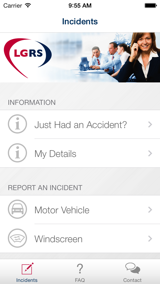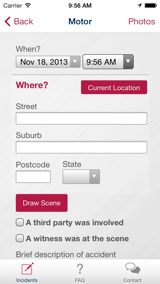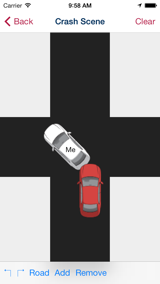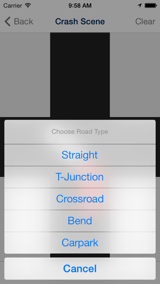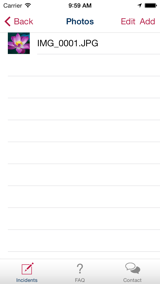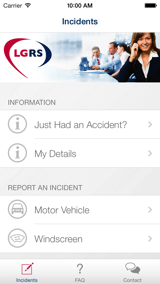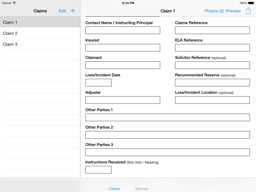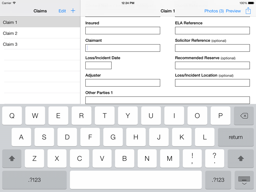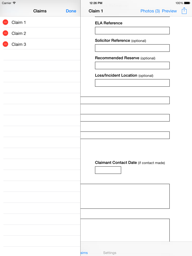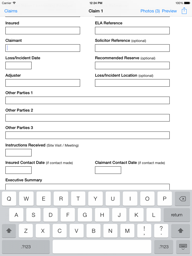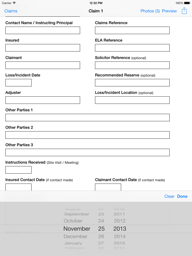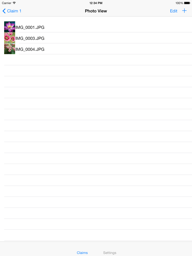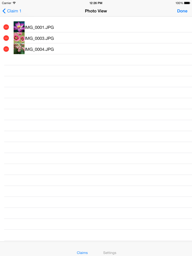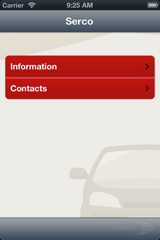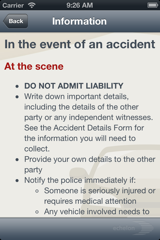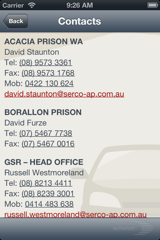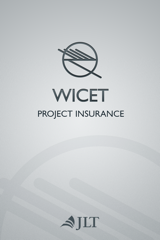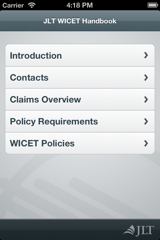iOS Apps
I started iOS programming in 2013. All the apps I've written for my current workplace have been internal, enterprise-distributed apps. Nothing on the App Store (yet).
LGRS Motor Vehicle Claim
An insurance claim form to fill out when you have an accident in company cars. You can also draw the accident scene, attach photos, and view the attached photos.
The data is sent to a web service as a MIME multipart message.
The forms themselves are web pages (UIWebView), which was a mistake in hindsight. Using HTML form elements was quicker but I lost the ability to fine tune things. E.g. I couldn't auto-capitalise words as you can in a UITextField. This would have been a nice-to-have for entering names.
(Tap or click on a screenshot to enlarge)
Echelon Loss Adjusting (iPad)
Loss Adjusters (a.k.a. Claims Adjusters) investigate property damage in an insurance claim. This is an iPad form that Loss Adjusters can take onsite to fill in. Multiple claims can be saved and submitted later. You can also attach photos.
The app switches between portrait and landscape mode. In portrait mode, the side menu is accessible via a button.
I learnt from my earlier mistake with the LGRS app and used native form elements for this app.
(Tap or click on a screenshot to enlarge)
Serco
A very simple app. The first native iOS app I made for work. It's basically a handbook on what to do in an emergency.
The main menu is a UITableView. The content pages are UIWebViews.
(Tap or click on a screenshot to enlarge)
WICET
WICET was written in PhoneGap, a cross-platform framework for building mobile apps using HTML, CSS, and JavaScript. The WICET app is also a handbook, like Serco (above).
We spent a lot of time trying to get our CSS to mimic iOS's look-and-feel. We also found PhoneGap quite limited. Echelon Loss Adjusting (above) started as a PhoneGap app. The original developer struggled with it for three weeks before it was re-assigned to me to rewrite in Objective-C.
(Tap or click on a screenshot to enlarge)
